Orders over $50 ship FREE
How Often Should I Replace My Bicycle Tires?Typically you will replace your mountain or road bicycle tires when:
1. They are worn out
2. You're not happy with way your bike is performing and you think new mountain or road tires will help.
Reason #1 - SafetyA common question is: How long do Hybrid or Road tires last? The conventional wisdom is that your road bike tires last anywhere from 1,000 to 3,000 miles. High-end (more expensive) tires should last at least 2,500 miles. Racing bicycle tires, which are designed for speed and high-performance, may need replacing after 1,000 miles, but tough bicycle touring tires can last as
long as 4,000 miles. The most common sign that your bicycle tires should be replaced is a sudden streak of flat tires.
Bicycle tires wear with age, too. If your bike is stored your tread will not wear out but your tire can harden and crack with age. If your bike tires are cracking or fraying do not ride your bike until you're replaced your tires. We also recommend when you replace your road or mountain tires you should replace the inner tubes also.
As rubber wears away there is less and less standing between the inner tube and the junk on the road or goat heads on the trail.
There’s a reason tears and tears are spelled the same way. A rip in your tire is often the end of that rubber’s usefulness. If you’re on the road, you can temporarily boot a tear with a folded up dollar bill or the boot included in the Tire Book Patch, but once you get back to home, it’s time to do some shopping and replace that tire.
You can often identify a tear before it’s an issue by checking your tires regularly for bulges.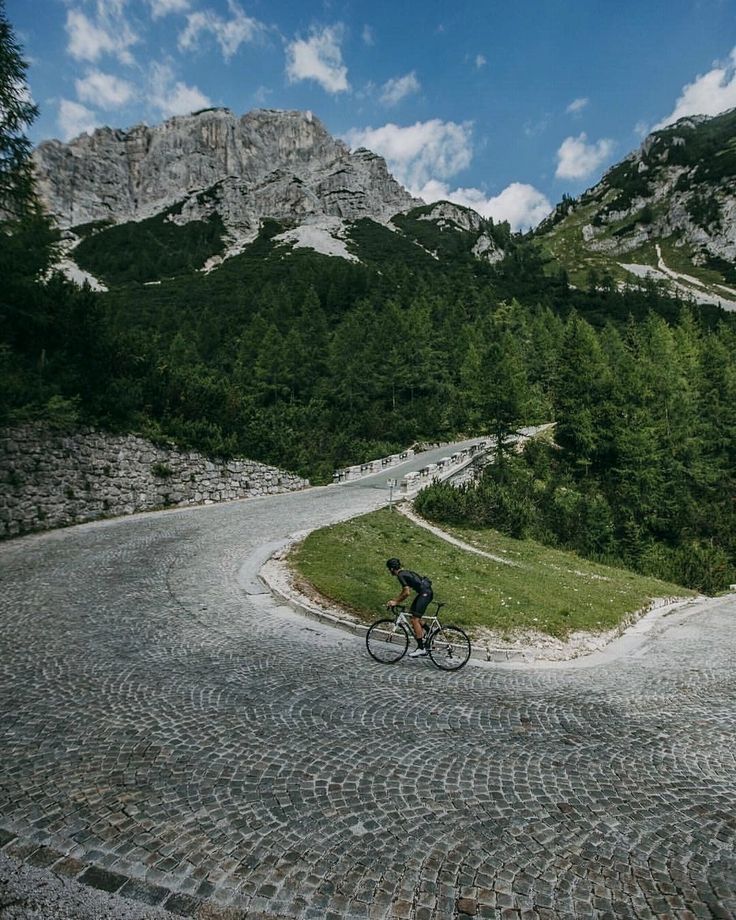 If you see something growing that looks like a tire tumor, there’s a weakness in the rubber and it’s only a matter of time before it tears and your tube suffers a blowout. Replace the tire before your next ride or you might have the other tears which we would hate to see you have.
If you see something growing that looks like a tire tumor, there’s a weakness in the rubber and it’s only a matter of time before it tears and your tube suffers a blowout. Replace the tire before your next ride or you might have the other tears which we would hate to see you have.
When it gets to the point that every stray piece of glass, rock, etc… is costing you a patch it’s probably time to make a change. Before installing your new tires keep in mind you can install tire liners which help prevent flats.
Reason # 2 - Controlright bike tires for your bicycle, the first thing to know is what size you need. To determine this, simply look at the side of your tire where you'll find a size marking or a tire label with the tire size on it. Common sizes include 26 x 1.5; 26 x 2.0; 700 x 25c or 29x 2.35. There are many tire sizes so be sure to write it down before ordering on-line or going to your local bike store.
When you replace your mountain or road tires, you must match diameters, so if you have 26-inch wheels, only 26-inch tires will fit. You can usually change widths, for example, switching from a 26 x 1.5 tire to a 2.0 model puts you on a wider tire that holds more air, which you might like for more comfort, traction and control. Conversely, someone who road rides might switch from 700 x 28c tires to 23c tires to save a little weight for easier climbing and faster acceleration. While, if you were suffering frequent flats and a rough ride on narrow tires, you'd benefit by switching to wider tires for more control and comfort
You can usually change widths, for example, switching from a 26 x 1.5 tire to a 2.0 model puts you on a wider tire that holds more air, which you might like for more comfort, traction and control. Conversely, someone who road rides might switch from 700 x 28c tires to 23c tires to save a little weight for easier climbing and faster acceleration. While, if you were suffering frequent flats and a rough ride on narrow tires, you'd benefit by switching to wider tires for more control and comfort
Keep in mind that not all rims and bike frames accept all possible tire widths. Usually going up or down one or two widths will work. If you're considering a big jump up or down contact us to get recommendations.
Reason #3 - Peace of mindWe often get asked should I rotate my Mountain or Road Bicycle Tires?
Your rear tire will likely wear at a much higher rate than your front because a majority of your weight is on the back wheel and it’s responsible for your acceleration and drive.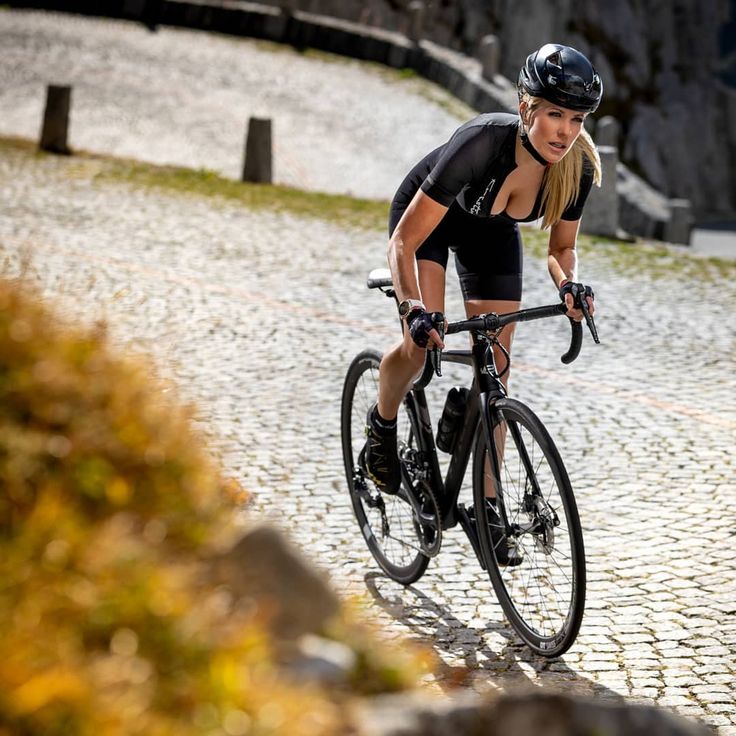 That means you’ll probably need a new rear tire long before you need a new front tire, so let’s talk tire rotation.
That means you’ll probably need a new rear tire long before you need a new front tire, so let’s talk tire rotation.
You never want to put a worn tire on your front wheel. I know it’s tempting, but your front tire’s traction is responsible for your steering and braking. Can you imagine losing traction and crashing? (Ouch). Losing traction on your rear wheel is much easier to save and you just look like you were doing a sick whip skid. So, if your rear tire’s worn but your front’s in decent shape, you can move your front tire to the rear, buy one new tire and pop it on your front wheel! You’re good to go!
If you are a mountain biker for example, mountain bike tires will probably cost between $30-99 USD. Keep in mind, there are numerous tread patterns, widths, wheel size variations that you have to be aware of. It's the same for road bike tires there are tires that have flat protection or puncture resistance available which typically will cost more but well worth every penny.
Fortunately, manufacturers have pulled out all the stops to provide excellent bicycle tires for all purposes. From built-in armor for puncture protection to supple casings that conform to the road surface for incredible handling, to dual-compound tread that's durable on top for long wear and sticky on the sides for grip, today's tires offer an impressive array of features and benefits. Manufacturers like Maxxis, Giant, Continental, WTB, Schwalbe, Surly, Serfas, Kenda and Tioga and many more have spent years developing strong, durable and reliable tires.
Now, pop on that new tire and tube because miles of adventures are waiting for you. It's Your World, Ride it!
We want to make sure you have all the information you need to select the correct size and model. If you have any questions or would like recommendations please contact us at [email protected].
If you enjoyed this article share it with a friend and leave us a comment.
Shop Tires
Back to blogReach us Monday-Saturday 9-6 PST
Store Hours: Tuesday-Saturday 11:00 am - 6:00 pm
Find a Bicycle Warehouse Store Near You!
1 / of 4
View all
Your cart is empty
If you love to go on long trips off-road, it is best to be prepared for the unexpected during your journey. The last thing you want to happen is to have a flat tire in the middle of nowhere.
The last thing you want to happen is to have a flat tire in the middle of nowhere.
That’s why knowing how long do bike tires last is crucial. A standard bicycle can live from 1,000 to 3,000 miles. But there are plenty of factors you should consider first. Get to know them here.
Table of Contents
The answer depends on your type of bike. If your bike is designed for off-road trail adventures, but you only use them on asphalt roads, then the answer is yes!
Trailing bikes are designed with an out-of-this-world ruggedness, and that includes their tires. If you don’t use it on rough roads most of the time and you mix it with proper care, then your trailing tires can definitely ace up an 8,000-mile trip.
Just like humans and animals, different tire types have different average lifespans. But of course, a handful of factors go into a bike tire’s lifespan, too.
In general, an average bike tire can get anywhere between 1,000 and 3,000 miles. Granted, the distance disparity comes off great, even in standard ones.
If you have specialized bike tires, you can enjoy a bit more distance. The usual mileage you can have from rupture-resistant tires or touring-intended tires is 3,000.
Racing Tires are the ones that live the shortest. They are built with minimal design and optimum racing performance, so durability is often compromised. They can only go a little bit higher than 1,000 miles.
Road tires range from 1,000 to 3,000 miles, depending on your care. High-end tires should go more than 2,500 miles, given their price.
Even though touring tires can last up to 4,000 miles, they’re not as durable as trail tires that can go from 3,000 miles to 8,000 miles of endless off-road adventures.
Aside from design and purpose, the brand also plays a part in your tire’s longevity. So the next time you buy one, make sure to buy in ones that stayed up in the industry for too long.
Thickness also affects the bike’s span. Trail tires are thicker than racing tires as they are designed with optimum durability. That’s why they can reach impressive mileage that racing bikes could not.
Ensuring that your bike tires are in good shape keeps accidents and dangers at bay.
Let me introduce some of the signs to determine your tire’s condition and the remaining lengths they can expectantly go.
There is a fair cause why tears and tears are spelled the same. Even a tiny slit in your bike tire brings the tip of your rubber’s worth.
That’s why it is important to check your tires from time to time. Carefully observe if there are bulges or tire tumors in your bike tire. This is usually the first sign of tire weakness that eventually results in a blowout.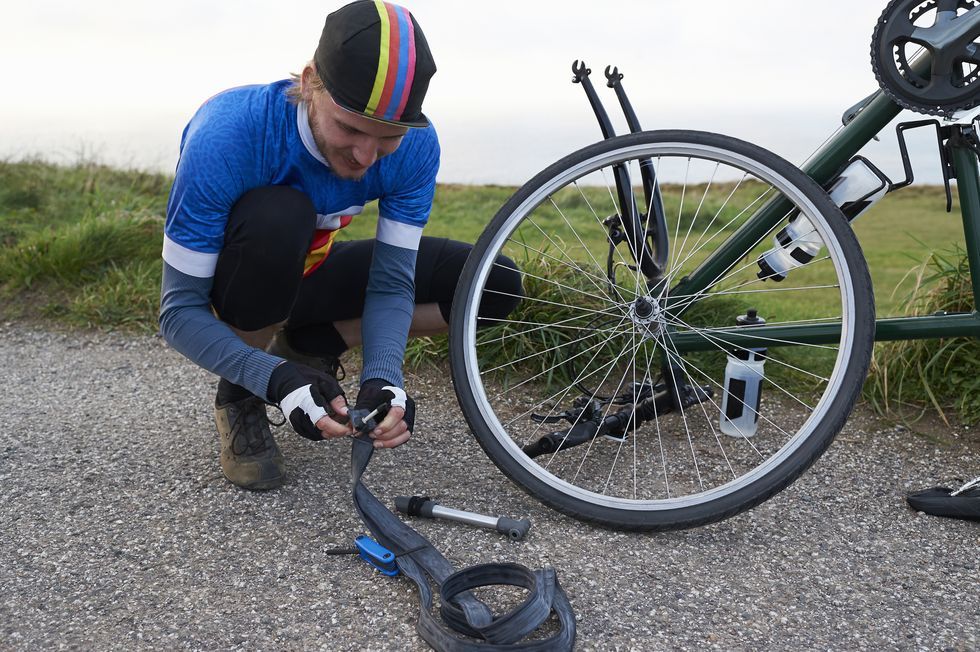
Another sign for an old and wearing tire is doing constant patch-ups to your bike tire. You will notice this when every point object on the road like glass and rocks costs you a patch or a quick fix.
Snaking is also one more thing, and I don’t mean literal snakes. Snaking refers to a tire’s spin that goes back and forth when you try to spin it with your hands. It is one of the most dangerous signs to look out for.
Snaking stems from the separation of interior threads that causes your bike tire to fail more quickly than expected. It usually occurs when you start gaining speed, which is extremely risky as you’re more likely to lose control over your bike.
If you plan to take a trail in the wilds for your next ride, it is way better to replace the tire than to see tears that leave you on the road.
Replace your bike tires when they are starting to get worn out, and you observed the things I talked about above.
Next is when you are not happy with your bike’s performance anymore, and you start to think that new mtb or road tires start to become a better option.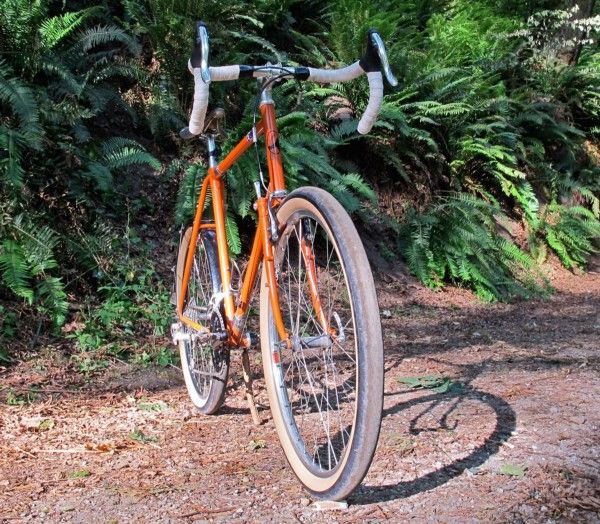
We can never escape getting a flat tire when we ride on the road, even once in our lives, as there are still several conditions that can blow chunks to our tires.
While the first thing that goes through our minds is tire replacement, you might have to think twice as it may be unnecessary. It will all depend on how bad the tear is and the road conditions that you face.
If you can estimate how the tire takes up road damage, you will know the right decision.
One temporary solution is to boot a tear with a crumpled or folded bill. A boot can also be found in a tire’s book patch, like the Park Tool TB-2 Tire Boot. It is a good adhesive that keeps the boot in place for the time being.
These methods can help you get back on the road just enough to reach home and replace the tire.
Related Guides: How to Fix Flat Bike Tire Without Tools
Which Tire Wears FasterYou can never risk your safety when hitting the road. Rear tires wear faster than front ones because most of your body weight is on the back wheel. Rear tires are also responsible for your drive speed and acceleration.
Rear tires wear faster than front ones because most of your body weight is on the back wheel. Rear tires are also responsible for your drive speed and acceleration.
That means you will most likely need rear tire replacements long before you’ll need a front one. However, front tires are as important as the back ones because front traction controls your braking and steering.
You never want to experience traction loss and go crashing all the way down the road.
If you are hitting the road but discover that your back tire is worn, I can share one tip with you by moving your front tire to the rear, given that the front tire is in good shape.
You can then head to a store, get a new bike tire, and pop it in your front wheel. It’s an easy-peasy job that keeps you on the go!
Right SizeYou might get confused about the ideal tire for your bike. In this case, you have to get the size you need, which is usually marked on the side portion of your tire.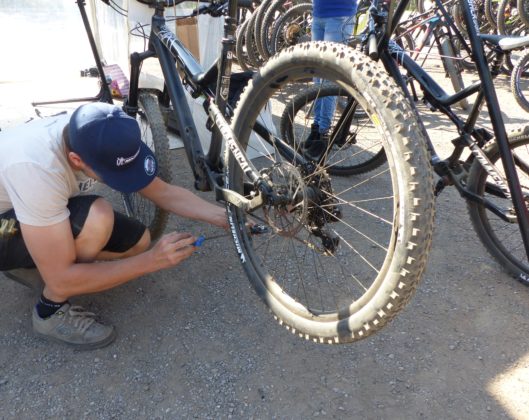
Since I could not cover all interesting topics about a bike’s potential, you can check out this informative video from GCN Tech.
We finished tackling the tire’s lifespan, including average mileage and affecting factors. You can boot a tear with one folded bill or a boot from a book patch in dire situations. If your bike got none, the Park Tool TB-2 Tire Boot is a decent choice.
Henry Speciale
“Bike commuting should be the trend for the next few years, and it is a convenient and eco-friendly way for us to travel. And we are here to make it a bit less troublesome for people who want to maintain their vehicle for a long time. So, the content I expect to put out here is offering help for bikers who are facing issues with parts of their bikes once in a while. Let’s have fun and protect the environment together!”
And we are here to make it a bit less troublesome for people who want to maintain their vehicle for a long time. So, the content I expect to put out here is offering help for bikers who are facing issues with parts of their bikes once in a while. Let’s have fun and protect the environment together!”
When riding a bicycle, there is no iron box around you, as when driving a car, and you are exposed to wind and other weather conditions. When riding a bike, there is no heavy steel body under you, like when riding a motorcycle, and you just fly above the ground. Speed in such conditions is felt as fully as possible.
Too many beginner cyclists overestimate the speed at which they ride. Having noticed the figures of 25-30 km / h on the computer, many people think that they most often move at this speed, and this is the average speed. But this is not so, only an experienced cyclist can maintain such a speed, and athletes are also capable of unimaginable records.
Contents
Velodrome has a maximum speed of 51.151 km/h. In a race on the track in Mexico City, the Italian athlete Francesco Moser in 1984 covered a distance of 51.151 km in one hour. This result is considered a speed and endurance record. As the record holder himself admitted in 1999: to maintain high speed and not slow down for a second, he was helped by blood doping, which at that time was not prohibited.
Maximum speed in a straight line, with aerodynamic fairing installed on the bike - 133.78 km/h. This world record was set by 26 year old Dutchman Sebastian Bowyer in 2013 in the 200m. The rider was lying on his back, this bike had front-mounted pedals, and the velomobile itself was completely enclosed by an ultra-light carbon fiber fairing. This velomobile was built jointly by students of the Free University in Amsterdam and the Delft University of Technology.
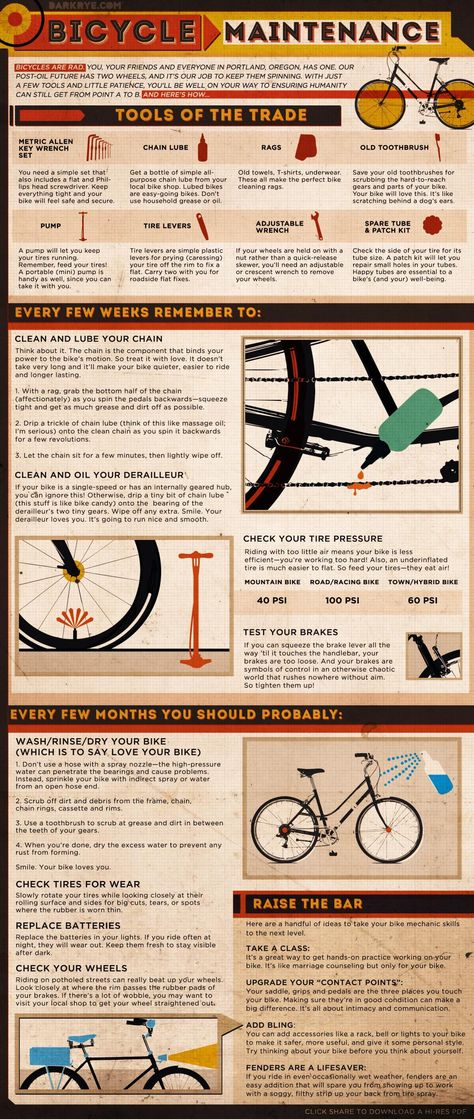
Maximum speed in a straight line, with bicycle covered in an air bag - 268.83 km/h. This absolute bicycle speed record was set by 50-year-old accomplished athlete Fred Rompelberg from the Netherlands in 1995. This result was achieved on a flat surface of a dried-up salt lake in Utah (Bonneville Salt Flats), and only thanks to the bicycle following the front of a moving racing car, the large fairing of which protected the cyclist from the oncoming air flow. Of course, a special bicycle was built, which is impossible to ride under normal conditions.
In 2019, American Denis Müller-Korenek broke the speed record set by Dutch cyclist Fred Rompelberg, who reached almost 269 km/h in 1995. The girl set a record on the famous track in Utah, which is actively used by riders around the world. The area for races is the bottom of the dried lake Bonneville.
Upon arrival, Denis was in tow until the dragster pulling her reached the mark of 240 km/h, after which the girl got off the tow and continued to move on the bike, spinning the pedals. The athlete uses a special carbon fiber bike, which provides high stability and the ability to accelerate to tremendous speeds. He helped her get top speed 295.6 km/h The milestone of 300 km / h was not conquered, but the result is still impressive.
The maximum downhill speed of is 222 km/h. This speed record was set on a mountain bike (mountain bike) by the Frenchman Eric Baron in 2000 on a run-in ice ski slope in the French Alps. To set this speed limit, a bike was built with improved aerodynamics, but with a dampened fork and rear suspension. The athlete himself was dressed in an aerodynamic hard suit suit. In 2002, Eric Baron, already on the dry gravel slope of the Sierra Negro volcano in Nicaragua, was able to accelerate to 210.4 km / h. After driving about 400 meters, the bike under the daredevil, due to the unbearable load on the frame, was torn into two parts. Eric Baron received a severe hip fracture, dislocation of the left shoulder and cervical spine, numerous bruises and cuts, but the athlete survived thanks to a helmet and a protective suit.
In 2002, Eric Baron, already on the dry gravel slope of the Sierra Negro volcano in Nicaragua, was able to accelerate to 210.4 km / h. After driving about 400 meters, the bike under the daredevil, due to the unbearable load on the frame, was torn into two parts. Eric Baron received a severe hip fracture, dislocation of the left shoulder and cervical spine, numerous bruises and cuts, but the athlete survived thanks to a helmet and a protective suit.
The maximum average speed for a road bike is 41.654 km/h. The American road racer Lance Armstrong was able to keep such a speed at the Tour de France distance in 2005. On the descents from the mountains, the participants of this competition develop a speed close to 90 km / h.
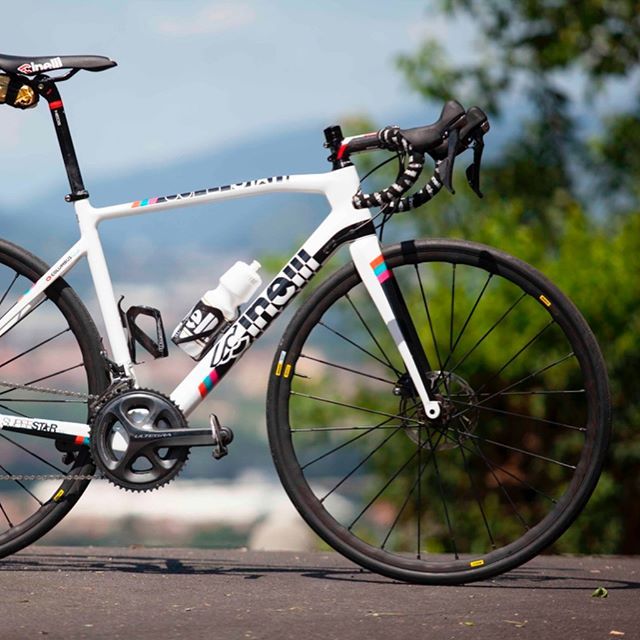
Hard-to-reach records inspire any athlete, and an ordinary person who sometimes chooses to bike rides is much more interested in knowing how fast one can travel on ordinary roads without taking part in competitions.
To measure speed on a bicycle, not so long ago - fifteen to twenty years ago, large, heavy and unreliable mechanical speedometers were installed. Today, everyone can afford to buy a miniature electronic bike computer that, in addition to current speed and total mileage, displays average speed, maximum speed, route length, pace per minute, calories burned, travel time, and other useful information in more expensive models.
The average cyclist on a modern mountain bike, without undue effort, can maintain an average speed of 18-20 km / h on the highway, traveling 10 km in 30 minutes. The same cyclist on a road bike can move at an average speed of 20-25 km / h on a straight asphalt road, traveling 10 km in 25 minutes.
The gender of the rider is not critical at these speeds. An average cyclist is a person who rides approximately 20-50 hours per month or 1-2 hours per day.
At short distances of about 10 km, everyone can reach an average speed of 18 km/h, including teenagers from 12-14 years old. A more experienced cyclist who travels more than one thousand kilometers a year will cover the same distance twice as fast. He has higher physical strength, better riding technique and generally a better bike. Such people, thanks to trained endurance, can maintain a speed of about 30 km / h, at a distance of 100 km along the highway. For such distances, the average cyclist rarely travels, or does not travel at all.
In urban conditions, it is necessary to: avoid stopped cars and public transport, stop at intersections and crossings, slow down before entering turns and in front of pedestrians, so the average speed of a cyclist in the city is always lower than on the highway, approximately 5-10 km/h .
Although a road bike can be ridden faster on pavement than a mountain bike, it is not recommended for city riding. The biker sits low on the road bike and has poor visibility, and it is impossible to stop emergency on such a bike without skidding. A mountain bike, although slower than a road bike on hard surfaces, is more preferable for city riding. The mountain bike is very easy to maneuver thanks to the wide handlebars, and the excellent grip of the wide tires on the pavement will allow you to instantly freeze in place.
When riding on rough terrain, even on a mountain bike, it is not possible to achieve a top speed of 30 km/h. Since outside the asphalt on the way there are often pits, mounds, sand, during the passage of which the speed will significantly decrease. When riding a mountain bike on a forest road, the average speed is usually 15 km/h.
On the other hand, a road bike, with its thinner tires and more weight distribution on the front wheel, is actually not suitable for forest riding. The average speed of a road bike when riding on sand, fallen leaves, snow will be 5-8 km / h. When trying to get through deep sand or snow on a road bike, the front wheel will skid to the side, or it will hit the pressed sand, and the rider may eject through the handlebars. In addition, when riding a bicycle without shock absorbers on a gravel or tracked road, fatigue accumulates very quickly due to blows to the arms and spine.
The average speed of a road bike when riding on sand, fallen leaves, snow will be 5-8 km / h. When trying to get through deep sand or snow on a road bike, the front wheel will skid to the side, or it will hit the pressed sand, and the rider may eject through the handlebars. In addition, when riding a bicycle without shock absorbers on a gravel or tracked road, fatigue accumulates very quickly due to blows to the arms and spine.
Experienced athletes can travel 100 kilometers at an average speed of about 30 km/h. So Rui Costa (winner of the 242 km group race) in 2013 covered the distance at an average speed of 36 km/h.
For example, let's give the norms for obtaining ranks for road cycling in the discipline "individual time trial" (RUSSIA):
| title/category | distance (km) | Time (minutes) | Average speed (km/h) | MSMK MSMK MSMK 64 | 46. 88 88 |
| MSMK Woman | 25 | 35.5.5.5.5.5.5.5.0076 | 42,25 | ||
| 25 | 933 933 933.33,33,33,33,33,330012 Age (years)/Paul | distance (km) | Time (minutes) | Average speed (km/h) | |
| 19-28 43 | 27.91 | ||||
| 18-28 Women | 10 | 25 | 24 | ||
| 29-39 Men | 46 7329-34 Women | 10 | 27 | 22.22 |
The speed of movement is most dependent on the physical strength and storage of the rider. The experience of the rider has more influence on the speed of riding than the choice of type of bike. On the highway, an experienced mountain biker will be able to keep novice road bike riders on their tail, maintaining a higher speed even when climbing uphill.
On the highway, an experienced mountain biker will be able to keep novice road bike riders on their tail, maintaining a higher speed even when climbing uphill.
At speeds of 25-27 km/h, air resistance significantly slows down the movement of the bicycle. If a headwind blows, it becomes difficult to move already at a speed of 10-15 km / h. A mountain bike with a wide and high handlebar, and especially a low saddle, is much harder to pedal at 30 km/h than a road bike. The road bike has a special detail - a narrow steering wheel with a lower grip (ram's horns). If there is a noticeable headwind resistance, a road bike rider can lean against the handlebars by grabbing the handlebars at the bottom of the arc, thus greatly reducing the load.
The only way to completely get rid of oncoming air pressure is to drive into the air bag, under the protection of the bus or truck in front. But it is very dangerous to attach yourself behind a bus or a truck, as they can brake sharply or turn when driving around the pit.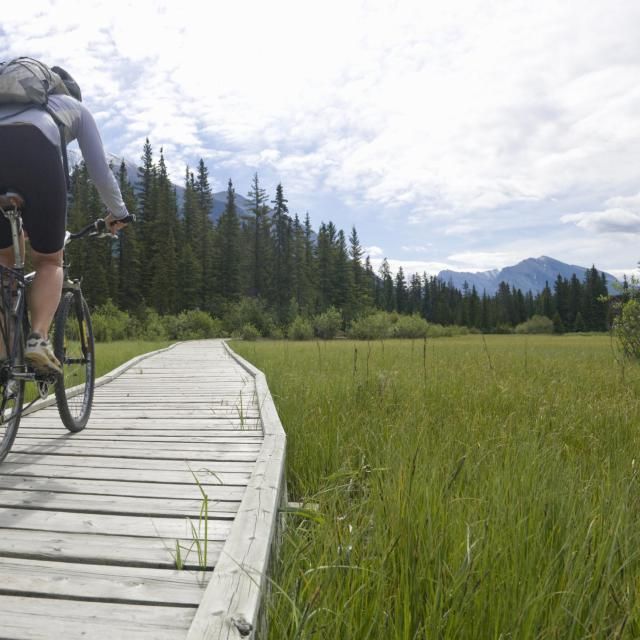
This resistance is especially felt at the start of a journey. It takes more energy to accelerate from a standstill, both for the cyclist and for the car engine. After the start of movement, rolling resistance has less effect on the amount of effort required for acceleration. With increasing speed, this resistance gradually decreases.
Increasing the friction between the tire and the road primarily increases the amount of rolling resistance. A narrow tire that has pressed through soft ground is hard to lift off the ground. A tire with a wide-spaced tread is excessively rubbed into a hard asphalt surface, moreover, it is quickly erased. Therefore, you should choose tires according to the width, area and tread depth, taking into account which roads you will ride your bike on.
Chamber pressure significantly affects the friction between the tire and the road. The more inflated the chamber, the easier the wheel rolls on asphalt and hard ground.
To facilitate driving on gravel, sand, mud, snow, it is recommended to reduce the pressure in the chambers.
A large bicycle weight greatly increases the rolling resistance. Accelerating and pushing uphill a heavy mountain bike is always more difficult than a lighter road bike.
Increasing the wheel diameter reduces the amount of rolling resistance. A bicycle for adults coasts in a straight line much longer than a child's. In addition, a large wheel overcomes bumps in the road more easily, rolling over small pits.
The speed of the bike will certainly be reduced by an unlubricated or dirty chain, as well as worn bushings and bottom brackets. If you're aiming for high speeds, then you'll need to buy expensive bushings and bottom brackets and keep an eye on their lubrication.
Bicycle shock absorbers, especially those that are too soft, reduce speed on smooth pavement. But they are indispensable when overcoming road sections with small bumps. A shock-absorbed fork turns out to be indispensable when driving around the city, while the rear suspension can be abandoned.
A shock-absorbed fork turns out to be indispensable when driving around the city, while the rear suspension can be abandoned.
In general, it is not worth sticking to the above average speeds, especially the maximum ones. You should ride your bike at a speed that is comfortable for you and enjoy the ride.
What is the maximum bike speed on the velodrome?
The maximum speed on the velodrome is 51.151 km/h. In a race on the track in Mexico City, the Italian athlete Francesco Moser in 1984 covered a distance of 51.151 km in one hour. This result is considered a speed and endurance record. As admitted at 19In 1999, the record holder himself: to maintain high speed and not slow down for a second, he was helped by blood doping, which at that time was not prohibited.
What is the maximum speed in a straight line in an aerodynamic fairing?
Maximum straight-line speed with aero fairing fitted to the bike is 133.78 km/h. This world record was set by 26 year old Dutchman Sebastian Bowyer in 2013 in the 200m. The rider was lying on his back, this bike had front-mounted pedals, and the velomobile itself was completely enclosed by an ultra-light carbon fiber fairing. This velomobile was built jointly by students of the Free University in Amsterdam and the Delft University of Technology.
What is the maximum speed when the bicycle is covered in an air bag?
In 2019, American Denis Müller-Korenek broke the speed record set by Dutch cyclist Fred Rompelberg in 1995 with a speed of almost 269 km/h. The girl set a record on the famous track in Utah, which is actively used by riders around the world.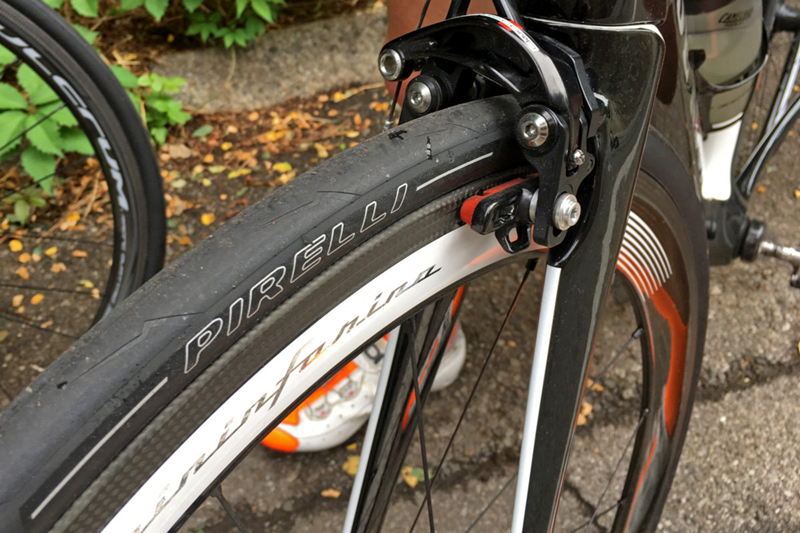 The area for races is the bottom of the dried lake Bonneville.
The area for races is the bottom of the dried lake Bonneville.
What is the maximum speed of the bike when going downhill?
The maximum downhill speed is 222 km/h. This speed record was set on a mountain bike (mountain bike) by the Frenchman Eric Baron in 2000 on a run-in ice ski slope in the French Alps. To set this speed limit, a bike was built with improved aerodynamics, but with a dampened fork and rear suspension.
What is the maximum speed on a road bike?
The maximum average speed for a road bike is 41.654 km/h. The American road racer Lance Armstrong was able to keep such a speed at the Tour de France distance in 2005. On the descents from the mountains, the participants of this competition develop a speed close to 90 km / h.
What is the average speed on a bike?
The average cyclist on a modern mountain bike, without undue effort, can maintain an average speed of 18-20 km / h on the highway, traveling 10 km in 30 minutes.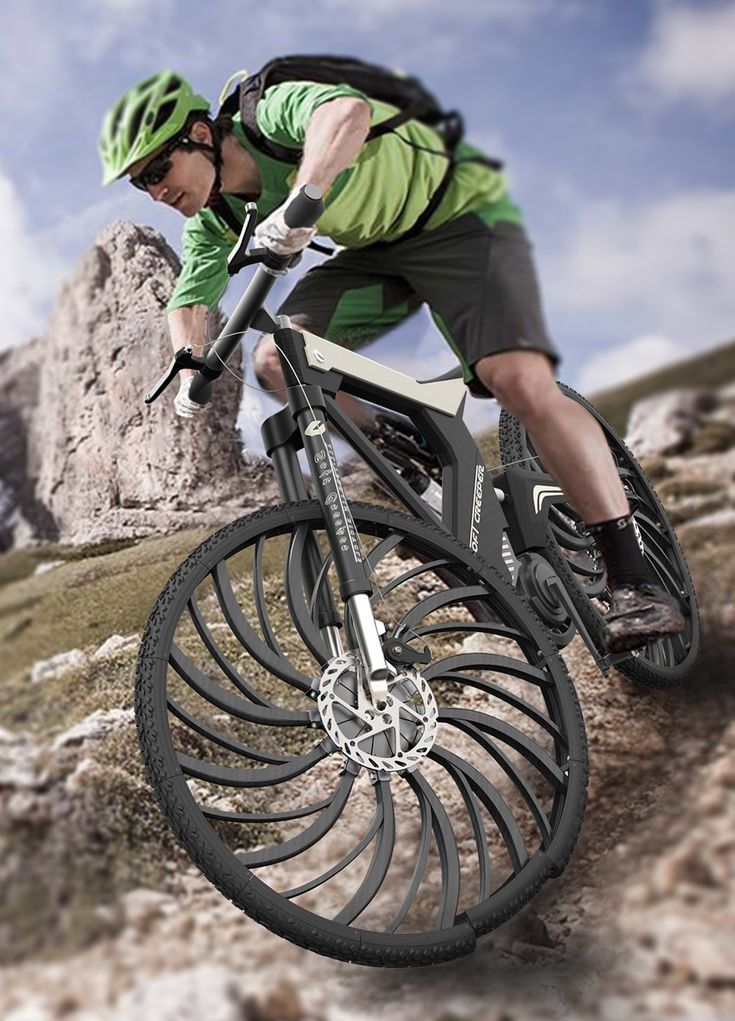 The same cyclist on a road bike can move at an average speed of 20-25 km / h on a straight asphalt road, traveling 10 km in 25 minutes. The gender of the rider is not critical at these speeds. An average cyclist is a person who rides approximately 20-50 hours per month or 1-2 hours per day.
The same cyclist on a road bike can move at an average speed of 20-25 km / h on a straight asphalt road, traveling 10 km in 25 minutes. The gender of the rider is not critical at these speeds. An average cyclist is a person who rides approximately 20-50 hours per month or 1-2 hours per day.
What is the average cycling speed downhill?
When riding on rough terrain, even on a mountain bike, it is not possible to achieve a top speed of 30 km/h. Since outside the asphalt on the way there are often pits, mounds, sand, during the passage of which the speed will significantly decrease. When riding a mountain bike on a forest road, the average speed is usually 15 km/h.
What is the average cycling speed when riding on sand, fallen leaves or snow?
The average speed of a road bike when riding on sand, fallen leaves, snow will be 5-8 km/h.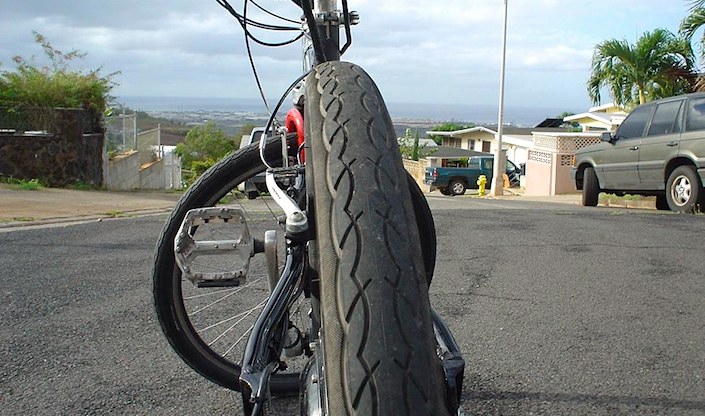
What is the average speed of a bicycle over a distance of 100 km?
Experienced athletes are able to cover distances of 100 kilometers, moving at an average speed of about 30 km/h. So Rui Costa (winner of the 242 km group race) in 2013 covered the distance at an average speed of 36 km/h.
What determines the speed of a bicycle?
Air resistance (aerodynamics).
The quality of the road surface.
Soil factor.
Wind.
Tire pressure and tread pattern.
Technical factors: friction in various parts of the mechanism, etc.
What is a comfortable bike speed?
In the city, a comfortable speed for a bicycle is considered to be about 15-20 km/h
On the highway, a comfortable speed for a bicycle is about 25-30 km/h
You can comfortably ride downhill at a speed of 40-50 km/h
What is the optimal speed for cycling?
Of course, everything depends on the physical condition of the cyclist, as well as on the class of the bike.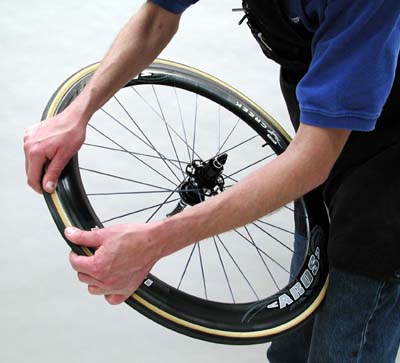 Today, the optimal speed for a bicycle is considered to be about 15-20 km/h
Today, the optimal speed for a bicycle is considered to be about 15-20 km/h
What is the speed record for a bicycle?
Denise Mueller-Korenek, an American, set a new world speed record for a bicycle, 295.6 kilometers per hour.
What is the maximum speed of a conventional bicycle?
On an ordinary bike, a not particularly trained person develops a maximum speed of 30-35 km / h, and riders, on special bicycles, in the race for the leader, for example, a motorcyclist, develop a speed of more than 100 km / h. In competitions, up to 50 km per hour comes.
My road bike has already covered 500 miles, but unlike cars, I have no idea how often to change tires. It is used under normal road conditions. The forehead of the tire is now smooth.
How do I know if my tires need replacing and how long should I expect my tires to last?
Ged
2012-03-29 21:42:12 +0000
Tire life depends on a number of factors including tire type, weight, driving conditions, front and rear tires, etc. In general, a good set of tires will last a couple of thousand miles.
In general, a good set of tires will last a couple of thousand miles.
When a tire is completely worn out, you can usually see threads under the rubber in places. Alternatively, the tire may begin to bloat in patches. In practice, road tires rarely reach this point. Much more often, they begin to accumulate a large number of cuts from glass and other debris on the road. When you start getting a disproportionate amount of flats, it's a good idea to replace the tire (you can use the tire longer, but you'll probably be spending more than the cost of a new tire in tubes).
Sourceprototoast
2012-03-30 13:24:27 +0000
Schwalbe give the following figures for their tires:
As a general guide, you can expect tire mileage between 2000 and 5000 km from standard Schwalbe tires.
Tires of the Marathon family, as a rule, have a length ranging from 6000 to 12000 km.
With the lightweight Marathon Racer and Marathon Supreme tires, performance is slightly lower (about 5000 to 9000 km). Marathon Plus has an extremely high mileage of 8000-15000 km.
Useful mileage data for MTB tires is not possible because the influence of driving style is too dominant.
Our Durano and Ultremo racing bike tires last from 3000 to 7000 km.
This page also has some pictures showing tire wear.
SourceTom77
2012-03-2923:39:04 +0000
Change them when they're worn out - either cracks in the sidewalls (due to age, sun and lack of ventilation, possibly exacerbated by poor tire quality) or the rubber in the center becomes paper thinner and you start getting a lot more punctures. The mere lack of a protector is not a problem.
(And it should be noted that in the states of the OP his tires "go bald" at 500 miles - a very short distance. Unless he looked like a child laying rubber on the brakes, then the tires in question most likely have center stripe with no actual tread. This is a common design to minimize rolling resistance.)
Unless he looked like a child laying rubber on the brakes, then the tires in question most likely have center stripe with no actual tread. This is a common design to minimize rolling resistance.)
Daniel R Hicks
2012-05-22 16:08:01 +0000
Sheldon talks about changing tires (or "tyres" for Americans)
SourceMany cyclists spend money replacing perfectly functioning tires simply because they are old or may have discolored sidewalls. If you just want new tires because the old ones look bulky, that's your money, but if you're primarily concerned with safety/feature, there are only two reasons to replace old tires:
- When the tread is worn so thin that you start to get a lot of flats from small pieces of glass and the like, or the fabric shows through the rubber.
- When the fabric of the tire is damaged so that the tire has a lumpy, uneven appearance somewhere, or the tube is protruding through the tire.
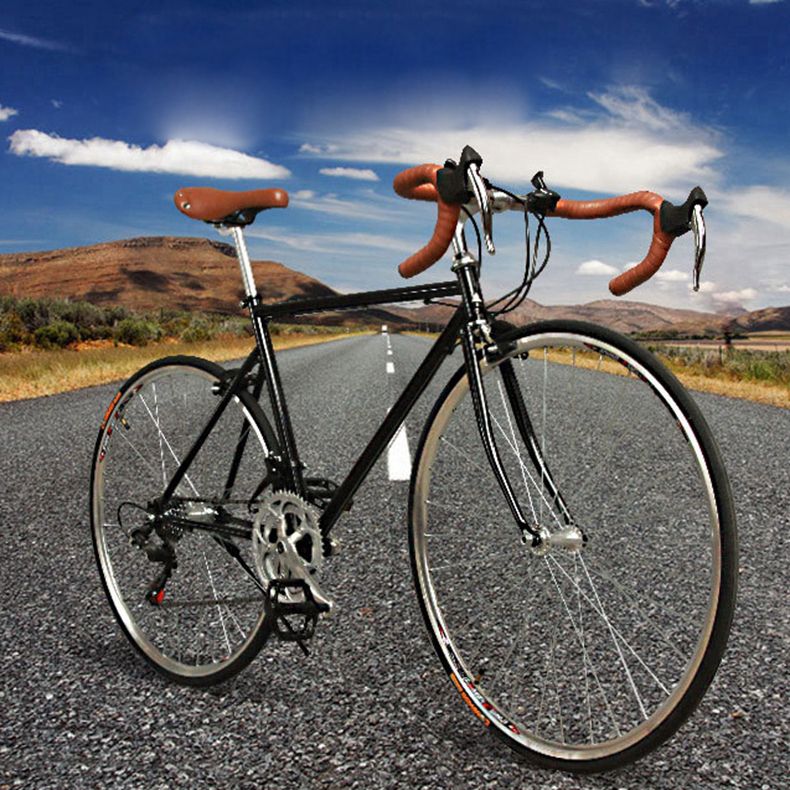
Cracks in the tread are harmless. Small punctures in a tire, such as those usually caused by fingernails, nails, thorns, or broken glass, are also harmless to the tire, as the tire does not need to be sealed.
Mike Samuel
2012-04-05 08:17:09 +0000
I drive about 200 km a week. My last set of tires - specialized armadillos - lasted exactly a year. There are at least 6 months left, but the tread rubber has started peeling off the tarp. So they lasted for me 10,000 km, which, according to the bike shop, should please me. I more than doubled that time (and distance) on the Michelin World tour package. The cheaper tires (1/3 of the cost) usually only last me 2 months before they are completely worn out. This is false economy.
Source Mike
2012-03-30 01:00:04 +0000
Always wipe and inspect tires after each ride. Look at the sidewalls as well as the tread.
Look at the sidewalls as well as the tread.
I get about 2,500 miles on a Continental Grand Prix 4000S, high end road tire. The rear tire always goes first. Then I rotate the front tire to the rear, and put the new tire on the front. I have never had to replace a front tire due to tread wear.
Some Continental tires also have wear indicators - two small dots in the tire - to let you know when the tread is gone. From there I get the figure of 2500 miles; it takes me about the same amount of time to get to the point where the wear indicators are removed.
Sourcenycvelo
2017-08-18 18:41:28 +0000
Fronts rarely wear out in the life of the bike as such, but they do age, harden and eventually delaminate. That being said, turn to replace the rear so that your new tire is your steering tire and the aging one is the ride tire (which will be used up). Schwalbe is right on tire mileage, premiums - but many of your "nameless cheap imports" have tire life measured in hundreds of miles, not thousands, so keep in mind that Schwalbe-Michelin-Continental-Panaraser is worth the price! Decent mid-range brand tires name good for 1500-2500 miles, road miles, with things like road quality, weather (wet roads wear tires more, actually, due to slippage), biker weight, and riding style (no MTBs can be realistically evaluated). On a "desert note" (where spikes called "goat heads" roam freely, also keep in mind that while you can add rhinoliners, pipe sealant, spikes, kevlar tires, in the end you're going to "get" While a small stud is not life lasting for the stud to prevent later fiber separation in the stud belt, it is VERY wise to find the hole and use either rubber cement or super glue to "fill" the stud hole - keep the hole closed. not to seal the air but to help restore some integrity to the tire structure after the stud pierces it... the rider's solution is here, but I've never had a "failure separation fiber" while I've had tubes that go out to tire exchange that literally had TABLES little green dots on them!(where Slug filled the "goat's head" in the spike hole).
Schwalbe is right on tire mileage, premiums - but many of your "nameless cheap imports" have tire life measured in hundreds of miles, not thousands, so keep in mind that Schwalbe-Michelin-Continental-Panaraser is worth the price! Decent mid-range brand tires name good for 1500-2500 miles, road miles, with things like road quality, weather (wet roads wear tires more, actually, due to slippage), biker weight, and riding style (no MTBs can be realistically evaluated). On a "desert note" (where spikes called "goat heads" roam freely, also keep in mind that while you can add rhinoliners, pipe sealant, spikes, kevlar tires, in the end you're going to "get" While a small stud is not life lasting for the stud to prevent later fiber separation in the stud belt, it is VERY wise to find the hole and use either rubber cement or super glue to "fill" the stud hole - keep the hole closed. not to seal the air but to help restore some integrity to the tire structure after the stud pierces it... the rider's solution is here, but I've never had a "failure separation fiber" while I've had tubes that go out to tire exchange that literally had TABLES little green dots on them!(where Slug filled the "goat's head" in the spike hole).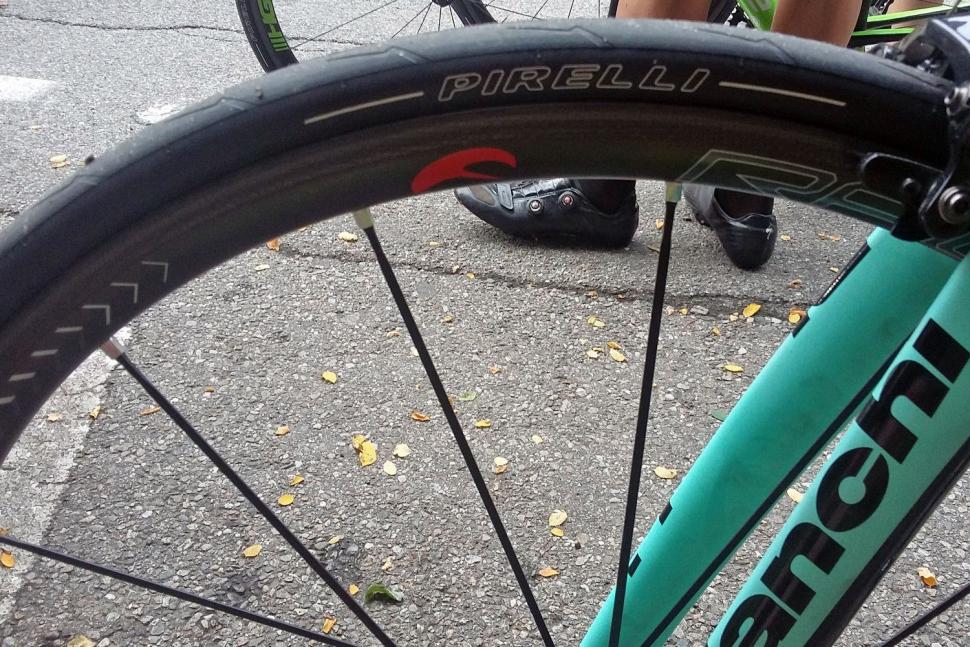 0003 Source
0003 Source
Lance
2012-04-03 23:08:32 +0000
I usually get 4000 miles from Continental 4000S. Years ago I got 5,000 miles from a Performance brand tire. However, neglecting attention, in the middle of a cold December ride, the corps completely disintegrated. So keep looking for wear and tear.
SourceJKP
2017-09-25 12:37:14 +0000
I drove through the ring a couple of times on my motocross bike. The rear tire has about 15,000 miles and the front has almost 35,000 miles. She's been through floods, ice, mud, and just about any kind of weather imaginable. Signs of wear remained only halfway through the service life. As long as you take care of your bike and maintain the right air pressure while riding it, it will last a very long time.